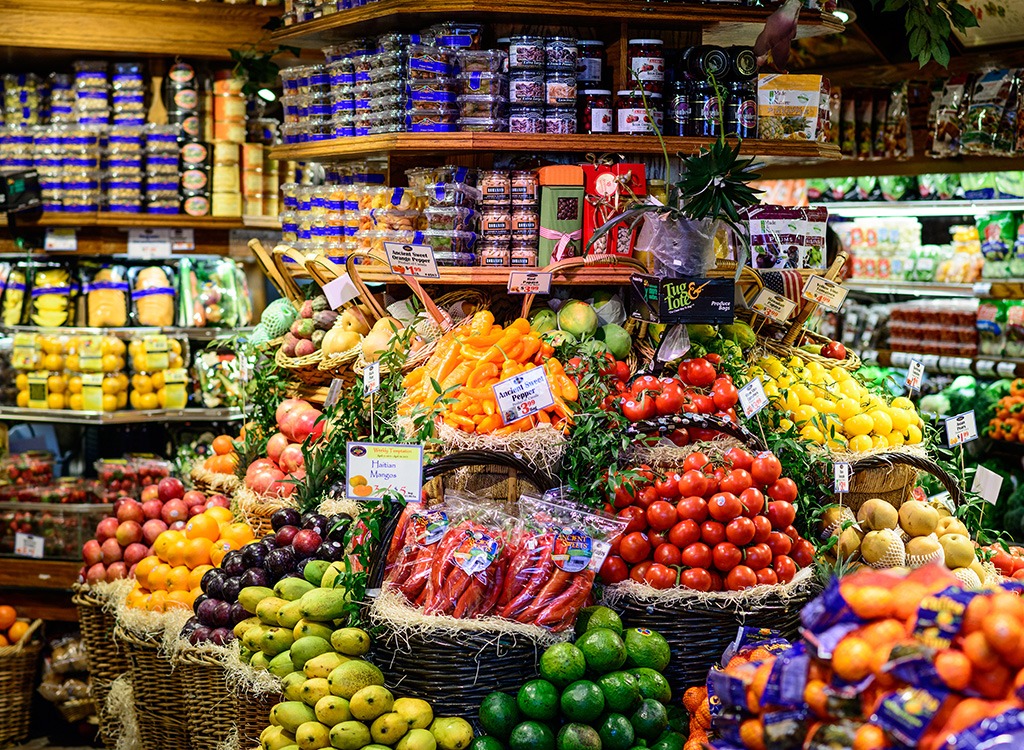7 Germiest Spots at the Grocery Store to Avoid

It’s no surprise that the grocery store is full of germs. With so many people going in and out of the store on a day-to-day basis, it’s hard to keep so much of it clean. And while many grocery store employees are tirelessly working to keep stores clean during the coronavirus pandemic, there are still areas known to be the germiest spots at the grocery store.
According to a study done by ReuseThisBag.com, there are quite a few surprising (and not-so-surprising) spots of the store that are a plethora of germs. In this study, they surveyed more than 100 grocery stores in ten different states in 2017—so before the pandemic occurred. They looked at small and large grocery stores including upscale and budget stores.
So next time you shop, here are a few spots to try and avoid. However, some of them may be inevitable that you will have to touch, so make sure to take extra precautions by wearing gloves and properly sanitizing to avoid the spread of germs.
Shopping cart handle

According to this study, shopping carts are one of the germiest parts of the grocery store—particularly the handles. Because a good majority of germs are transmitted through hands, touching the grocery cart with your hands means high spreading germs to others. However, if you need to use a grocery cart at the store so you can stock up, you should wipe it down with a disinfectant wipe and wear gloves to avoid contacting (and spreading) germs.
Refrigerator doors

The handles for those refrigerator doors are another alarming germy area of the grocery store. Because it’s another object used in the store that you touch with your hands, germs can easily be shared and spread. While you can’t avoid touching the handles of these doors to open them, you can take particular precautions like wearing gloves in order to open those doors.
Produce

This study also shows produce being a culprit for germs in the grocery store. A lot of people will pick up different produce in order to inspect and pick out which one they want—so who knows how many people really touched that green bell pepper that you just picked out? It’s probably safer, in terms of germs, to find produce that has been sealed in a bag. Or make sure that your produce is properly cleaned before using it.
Refrigerator bumpers

According to one Trader Joe’s employee, the bumpers found at the bottom of those large refrigerators at the store are qualified as “high-touch” items and are being disinfected regularly at the store. People tend to lean on these with their shoes or pants, so to minimize even more contact of germs, avoid leaning on these bumpers when you’re grabbing something in the refrigerated aisle.
Self-checkout stations

Touch screens are another highly used item in the grocery store that requires your hands—especially in the self-checkout. Plus, a lot of the self-checkout station requires physical contact including where you bag your items, weigh your items, and touch the machine as you grab the receipt.
Credit card machines

It’s no surprise that credit card screens are one of the germiest spots in the grocery store as well. Just like with self-checkout screens, credit card screens are also an item used by numerous people in the store. If you need to use it, wear gloves or sanitize your hands before and after touching it.
Bulk bins

While numerous stores are closing up bulk bins for now due to COVID-19, this is probably one of the germiest places you’ll find at the store in general. With so many hands touching those plastic bin lids and utensils, there are a lot of germs that can be floating around. Plus, who knows what grubby hands reached in there to sneak a snack? While using bulk bins does help with decreasing your plastic consumption, it may be best to find items that are properly packaged to ensure that your products are clean.








